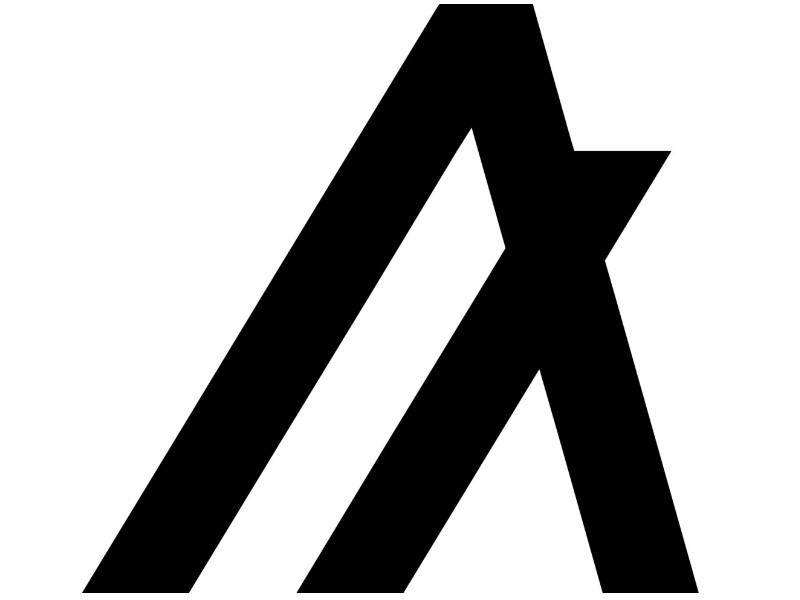Like any other blockchain that emerges in the cryptocurrency space, this “re-imagines” blockchain is also trying to solve the key weakness of Bitcoin. Algorand (ALGO) is a new player in the cryptocurrency world, but it impressively managed to rise to the top 25 cryptocurrencies by market cap.
Algorand is indeed making waves as a new alternative coin (altcoin) in the crypto market with its notable smart contract core architecture. Before we dip our toes in a rainbow pond, let’s first get to know the man behind this two-tiered blockchain.
The Man Behind Algorand
Algorand was designed and created by an Italian-computer scientist Silvio Micali in 2017. Micali has belonged to the Massachusetts Institute of Technology (MIT) Engineering and Computer Science Department faculty since 1983.
This MIT professor is a Turing Award winner, which is similar to a Nobel Prize in the field of computer science. Micali is a notable leader in the area of information security and cryptography. Micali’s research interests include secure protocols, mechanism design, pseudorandom generation, and blockchain.
Silvio is the co-inventor of probabilistic encryption, zero-knowledge proofs, Verifiable Random Functions, and many other protocols that later become the foundation of modern cryptography.
Micali founded Algorand with the aim of decentralizing finance. In 2019, Silvio and his team officially launched Algorand (ALGO), a secure, fully decentralized, and scalable blockchain that provides one powerful common platform for building services and products for a borderless economy.
At Algorand, it is Silvio who manages all research, including security, theory, and crypto finance.
Introduction to Algorand
Algorand is one of the shedload projects that seek to broaden the use cases of cryptocurrencies by solving blockchain trilemma, namely speed, security, and decentralization. Algorand strives to acquire these attributes through choices that deviate from how initial cryptocurrencies are designed.
Between Hawaii and the Philippines lies the Marshall Islands, a country with only about 50,000 inhabitants spread in over a thousand different islands in the remote area of the Pacific Ocean. Since it’s just a small country, it is greatly dependent on cross-border trade and finance to quickly acquire financial services and goods.
The Marshall Islands have embraced digital currency called SOV, which Algorand powers. Crypto experts believe that this crypto adoption move of the Marshall Islands will assist in curbing high transaction costs, allowing more accessible and simpler compliance with international partners and safeguarding them against inflation. The Marshall Island was the first to rubber-stamp crypto as a national currency.
Now, let’s dig a little deeper into what Algorand (ALGO) is.
Algorand (ALGO) is a decentralized network developed similar to Ethereum but with a quicker transaction and a strong focus on near-instantaneous completion. It aims to process up to 1,000 transactions every second and finalize transactions in just about 5 seconds.
Proof of Stake Consensus (PPoS)
Many of today’s blockchains fall into categories of proof of work (PoW) or proof of stake (PoS). However, Algorand has a pure proof of stake consensus (PPoS) as its mechanism.
Proof of work (PoW) requires nodes to solve given challenging cryptographic problems and serve up their solution in the company with a block proposal, referred to as “mining.” The winner in this mining process gets rewarded with the underlying cryptocurrency of the network, and solved blocks become part of the chain.
On the other hand, the proof of stake (PoS) blockchain allows users with a higher stake to receive more influence in validating and proposing new blocks. Frequently, through vote mechanism. In a normal proof-of-stake mechanism, the validators must set up a special computer in order to verify new blocks, at the same time, lock up coins to qualify as a validator. But the pure proof of stake (PPoS) is quite different.
In the pure proof of stake consensus (PPoS), all Algo coin holders get to receive a validator’s reward without the need to stake their ALGO coins to earn more ALGO. Every ALGO holder equally receives 4-6% APR of ALGO coins simply by holding. Hence, every Algorand holder’s wallet increase by 4-6% every year.
Decentralized Applications (Dapps)
Since Algorand has smart contracts, it can also run decentralized applications (Dapps).
High gas fees on the Ethereum network have led mounds of decentralized app developers to build applications through other networks, and some of those developers are turning to Algorand as a good alternative. Tether (USDT) is one token that has been transferred and created from Ethereum to the Algorand blockchain.
Similar to the ERC-20 protocol of Ethereum, Algorand has Algorand Standard Asset (ASA), which stands as their standard in creating and deploying new tokens on the network. Compared to Ethereum’s ERC protocol that necessitates developers to write the contract themselves, ASA only asks developers to fill out a form to create a new asset and then create a new smart contract around that asset. This feature of ASA vacates room for security flaws.
As central banks continue to seek possible cryptocurrencies for adoption, Algorand is a viable option since it has already proven its good performance in the Marshall Islands. According to Algorand, they were already working on 16 new projects. This just exhibits the good potential of this cryptocurrency to rise higher and higher.
Structure of Algorand Protocol
Algorand’s Layer 1 sustains tokens, smart contracts, and non-fungible token production. Most easy processes occur at layer 1 of the algorithm blockchain, aiding compatibility and security. Algorand’s Layer 2 is reserved for complex smart contracts requiring more computing power and space.
While Ethereum’s Layer 2 solutions are secondary blockchain, but Algorand didn’t stand in need of a secondary blockchain. Every once in a while, Layer 2 snapshots are provided back to Layer to check in with, allowing Algorand to scale while also being secure.
The consensus protocol of Algorand works by choosing a block proposer and a bunch of voting committees at every block to propose a block, as well as validate the proposal respectively. Both committee and the proposer will randomly choose from a pool of token holders, and the chances of getting chosen are proportional to
Plenty of cool cryptographic algorithms goes into this process. For instance, the “cryptographic sortition” and “certifiable random functions” ensure that voting is equally fair, no one colludes, and that the overall system is highly secure.
The Algorand Foundation and the Algorand INC
Algorand has two communities. One is a non-profit community that primarily centralizes on the governance, protocol, and open-source expansion called Algorand Foundation. The other is Algorand INC, which is responsible for the adoption of the technology.
The Algorand foundation has accelerator programs: Algorand Asia and Algorand Europe. These projects in the accelerator program assisted developers in undertaking new projects. But Algorand’s Layer 1 blockchain was developed and improved by Algorand Inc, and not by the foundation. Algorand INC is open-sourced and is unrestricted for fresh ideas for the Algorand blockchain.
Since the consensus mechanism of Algorand is PPoS, the carbon emission is really pretty low. Algorand (ALGO) blockchain is carbon-negative and doesn’t contribute to the global carbon trouble but also assists in reducing it. Moreover, Algorand INC also donates money to a company that aims to deliver solutions for offsetting carbon emissions.
Native Currency
Every blockchain possesses its own native currency, which plays an essential role in incentivizing acceptable network behavior. The native currency of Algorand is called ALGO. Once you are in possession of an ALGO, you have the right to participate in a consensus, allowing you to join the process of proposing and voting on blocks that come.
ALGO serves as a utility token when creating a new application. It can also be used as a minimum balance deposit if you desire to store data on the blockchain, as well as a payment for transaction fees. Fractions of a penny are what it takes to pay for any transactions in Algorand, which makes it a really economical blockchain.
The maximum supply of Algorand is 10 billion coins, and 6.5 billion is in circulation.



